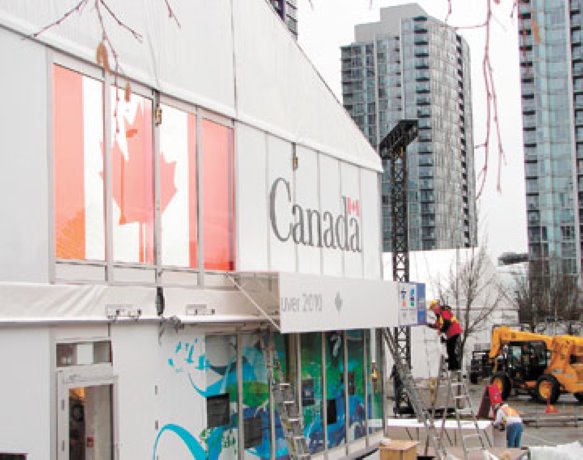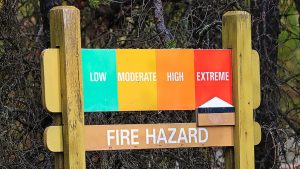The 2010 Olympic Winter Games are a little more than a week away and the streets of Vancouver and various venue sites are buzzing with construction activity. The construction of venues in Whistler and Vancouver was completed more than one year ago, but as the Olympics near, they are once again active with what is called overlay construction.
2010 Winter Games
VANOUVER
The 2010 Olympic Winter Games are a little more than a week away and the streets of Vancouver and various venue sites are buzzing with construction activity.
The construction of venues in Whistler and Vancouver was completed more than one year ago, but as the Olympics near, they are once again active with what is called overlay construction.
“We are very busy with overlay tenant improvements, which are part of the transition from a regular facility to an Olympic facility,” said Vancouver Regional Construction Association president Keith Sashaw.
“A tenant improvement is also when a restaurant or a facility is taken over to be a hosting pavilion. Dozens of pavilions are being put up or restaurants transformed into a facility for the various nations that are coming.”
Overlay construction involves non-permanent structures.
It includes street closures and the installation of fencing, security checkpoints, temporary seating, lighting and cables, commentator booths, camera platforms and tents.
The Olympics require temporary bleachers for 37,000 spectators, 7,000 square meters of scaffolding, 55,000 square metres of carpeting, 90 kilometres of fencing, 15 kilometres of temporary wall panels, 1,600 porta-potties, about 90,000 square metres of temporary tenting structures, 1,000 trailers and 565 kilometres of power cabling.
“We have been very active in the overlay program,” said Tom de Wolf, operations manager at Dominion Construction.
“I liken this to all the activity that takes place before a wedding. It’s a kind of organized chaos and the demands are constantly changing. VANOC (Vancouver Organizing Committee for the 2010 Olympic and Paralympic Winter Games) has taken the venues and is doing the final fine tuning for the actual events.”
Dominion has staff at about 15 to 20 locations, including Cypress Mountain, BC Place, Canada Hockey House, the Richmond Oval and the UBC ice rinks.
According to de Wolf, Dominion is working on a lot of little projects that require only one or two carpenters.
However, this work is happening at quite a few sites.
Dominion constructed the International Broadcast Centre at the Vancouver Trade and Convention Centre.
The company set up the facility in the high ceiling exhibition hall for more than 80 broadcasters.
The four-month project was completed in December, but a lot of little things need to be done, as people start arriving.
Overlay construction at Cypress Mountain involves tents, a mobile power plant, cables and a bleacher stadium that will seat 12,000 spectators.
Due to the unseasonably warm weather, Dominion is also working to prepare the snowboard and freestyle courses for all weather scenarios.
“We are building the jumps that the snow boarders will go off with a framework of wood,” he said.
“We build the jumps and the snow will go on top.”
In addition to this work, the course is being shaped and groomed as snow is being moved from higher elevations to build up existing stockpiles.
“Changes to the design of the competition courses necessitate adaptations in other critical areas, including broadcast positions, seating access, technology, sport production, and overlay plans to name just a few,” said Dick Vollet, VANOC’s vice president of mountain venues.
A team of 45 people working 24 hours a day since the middle of January have used eight snowcats and two large dump trucks to move more than 300 truckloads of snow from the top of Mount Strachan.
At least 1,065 bales of straw, which will be covered with a layer of snow, have been used to replace the base of packed snow.
Of these bales, about 800 were airlifted into place by helicopter to shape and construct snowboard and ski course features.
Snow making machines have been operating around-the-clock since November 2009 to produce the snow needed for the courses.
This snow has been stockpiled all over the mountain.
The first athletes arrived at the Olympic Village at Southeast False Creek on Jan. 29 and started training at the venues yesterday.











Recent Comments
comments for this post are closed